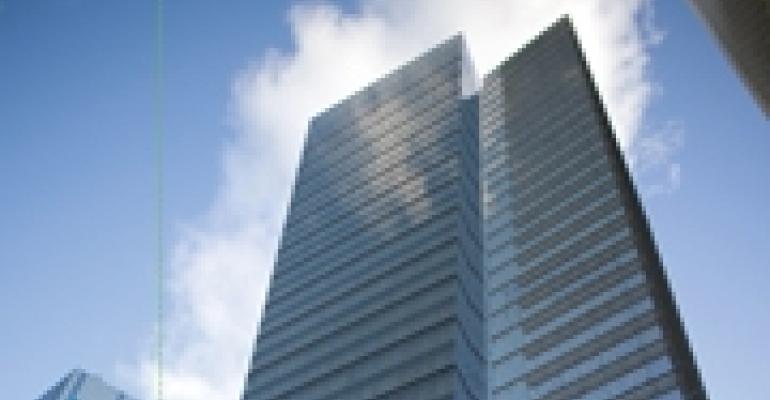
Walls shrouded in forest green, and lined with leather-bound volumes. Spacious, carpeted offices, draped with expensive fabrics and filled with mahogany furniture. Space to confide a legal breach, or negotiate with a departing spouse. Corridors lined with conference rooms. That’s the stereotypical law office — sprawling, energy-guzzling with its lights and electronics and the cost of heating and cooling its generous square footage.
But now, many of the nation’s 1.2 million lawyers have caught the green wave, and their offices are changing.
According to a new report by real estate services firm CB Richard Ellis, a number of the top law firms are taking stock of their energy consumption and carbon emissions, and developing a new strategy.
Law offices traditionally demand high square footage per attorney, with their massive file storage and library requirements, and sky-high lighting costs, particularly since employees spend many evenings and weekends poring over legal tomes. But the new trend is to shrink attorney space with open floor plans, shared workstations, and team environments.
In general, the space allotment is falling from the traditional range of 800 to 1,000 sq. ft. per attorney to 500 to 700 sq. ft. per attorney, according to CBRE’s law firm practice group in the new report, “Law Firms Build a Case for Green: Recent Trends in Law Firm Sustainability Practices.”
“Sustainability programs have grown increasingly common among law firms,” says Sally Wilson, CBRE’s global director of environmental strategy. At some practices, the sustainability programs are part of a company-wide initiative, while at others, they reflect client priorities or serve as a recruiting strategy. Environmental programs also help with public relations and business development.
Some firms are not only pursuing LEED certification through the U.S. Green Building Council, they are also using it at overseas branches, or pursuing international designations such as the Building Research Establishment Environmental Assessment Method (BREEAM) in the United Kingdom, or the Green Star system in Australia.
Chopping costs
What the trend means, specifically, is that a number of legal offices now are storing hard-copy files off-site, while new technology reduces lighting costs. Some law firms also use wireless HVAC control systems, which shrink installation costs.
In Chicago, the law firm Nixon Peabody tore down its walls and started fresh, installing windows along office corridors to let in natural light while protecting the privacy of clients with new techniques for the glass.
For many firms, going green starts with site selection. In locating its Atlanta office, the firm Seyfarth Shaw LLP picked a building in Midtown that was already LEED certified, the report notes.
Heating and cooling costs have been reduced for may firms through sub-metering, which allows tenants to be charged only for the energy they actually use, rather than being assessed a percentage of all energy consumed by the building. New tenants often negotiate with the landlord to allow sub-metering as a lease condition.
A study by CBRE and the University of San Diego’s Burnham-Moores Center for Real Estate shows that separate energy metering can help companies save up to 21% on electricity and gas costs.
Thinking small
According to the American Bar Association (ABA), 76% of the nation’s law firms have two to five lawyers, while 13% have six to 10 attorneys. Only 5% have more than 20 attorneys, as of the year 2000.
Some 1.2 million lawyers were licensed in the U.S. as of 2008. By far, the largest group (74%) was in private practice, while 8% were in government and another 8% in private industry.
Across the country, attorneys make up one of the largest segments among office tenants. The ABA, for instance, says it is the largest voluntary professional association in the world, with 400,000 members.
To read the CBRE law firm sustainability report, please click here.

